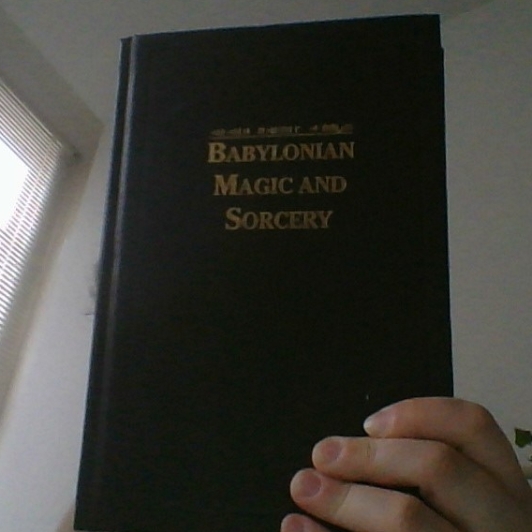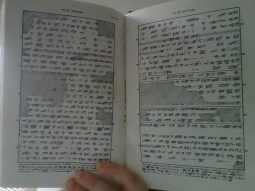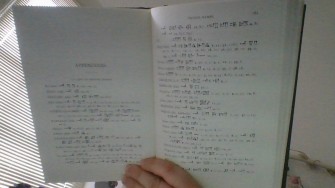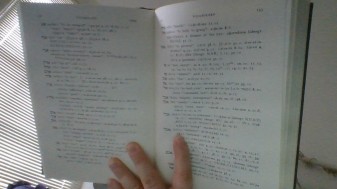I recently purchased a copy of Babylonian Magic and Sorcery because I have always had a fascination with the ancient Near East. Mixed in with my work with/for Lilith is some veneration of Inanna and Ereshkigal, and then there’s my fascination with cuneiform. I also love alphabets (who cares about hieroglyphs, just look at Demotic and tell me what it looks like) and cuneiform is so amazing. The story of how it developed really shows the growth from pictogram to logogram and it’s so complex.
a fascination with the ancient Near East. Mixed in with my work with/for Lilith is some veneration of Inanna and Ereshkigal, and then there’s my fascination with cuneiform. I also love alphabets (who cares about hieroglyphs, just look at Demotic and tell me what it looks like) and cuneiform is so amazing. The story of how it developed really shows the growth from pictogram to logogram and it’s so complex.
But I digress.
I bought Babylonian Magic and Sorcery because it’s a topic I want to learn more about. I have snippets of assorted charms and legends from Babylon, but when I read the reviews for this book I saw that it has not only the translations of the texts, but also the transliterations and plates of the cuneiform itself, along with a vocabulary list.

The chapters are set out starting with prayers to groups of gods, prayers to gods, prayers to goddesses, prayers to astral deities, prayers to those whose names have not been preserved, prayers against the evils associated with the eclipse of the moon, and finally the vocabulary lists and the cuneiform plates.
I have to say the cuneiform plates might be my favourite part- they’ve been reconstructed in such a way as to be surprisingly easy to look through (you know, for a language that is wedges pressed into clay.) The transliterations are numbered so you can match them to the plate and the line that it is referring to, as well as indicating areas where the original clay was broken and thus incomplete. Throughout the translations there are notes on the supplicant’s actions such as incense used and offerings presented.

I would love to have versions of the Descent of Inanna and Ereshkigal’s Marriage to Nergal in this format. The original cuneiform, transliterations and translations. There must be something like that out there- I just haven’t looked properly. Also Kamrusepa’s taming of Telepinu’s Anger. That would be a good addition too…

Do I have any complaints?
I think I would prefer to have the cuneiform plates throughout the text rather than at the back and use them to break up the main text a bit more. Constantly flipping between the transliterations, translations and cuneiform is a bit annoying, and the structure makes it little confusing as to what it is you are looking at.
A good addition for anyone interested in the prayers to these gods and those interested in cuneiform (which I will say that I am. I adore ancient alphabets.) It is an academic text rather than an instruction manual, so some reading and translation of the content is necessary.
All in all I’m very pleased with this book. The opportunity to look at Babylonian cuneiform and language in more depth is something I look forward to doing, and I think I’ll look into hunting down any other books of this style.
If this book is of interest to anyone I found my copy (a facsimile of the original edition) for sale secondhand on amazon. If you would prefer to not use amazon, copies can be found via AbeBooks.
